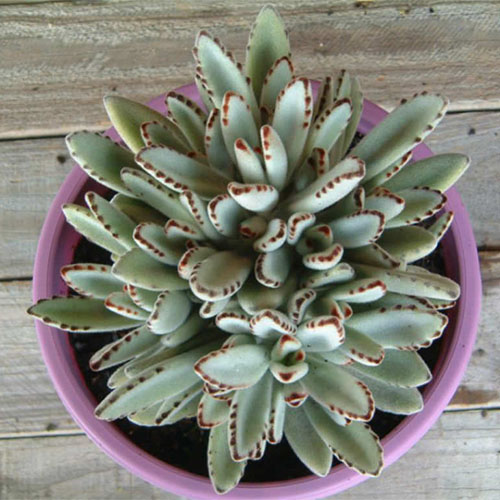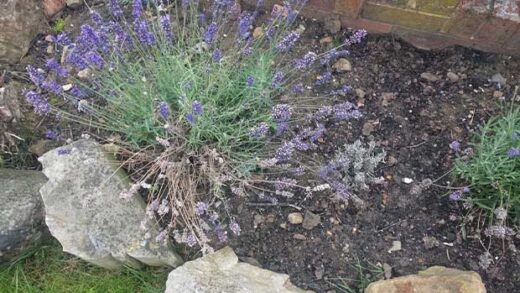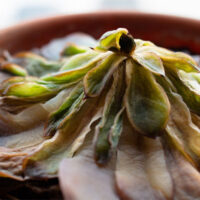From boutonnieres to hanging planters, succulents are now used in everything. They are a style that has spread beyond gardens to include wedding and home decor. A type of plant known as a succulent does well in dry environments.
There are many popular succulents types you could grow. While others are adorable, some succulents are odd. While some succulents are frightened, others are colorful. Succulents are among nature’s most inventive creations, on that much we can all agree.
We have compiled a list of the most common types of succulents to aid you in better understanding the various varieties and the ideal growing conditions.
Table of Contents
10 Types Of Indoor Succulents
Succulent plants are popular for a reason. They not only thrive on their own but also work well with other kinds of plants. Additionally, the Pantone color of the year, Greenery, is right on trend with succulents! From a child’s room to a home office, succulents come in a variety of sizes, hues, and styles.
Room temperature conditions with minimal humidity and dry air are ideal for indoor succulent growth. While they prefer direct sunlight, they can also tolerate lower light levels, which makes them perfect for home décor. The top 10 indoor succulent plant types are listed in the following paragraphs.
Crown Of Thorns (Euphorbia Milii)
Due to its ability to adapt to both dry indoor environments and room temperatures, the crown of thorns makes a fantastic houseplant. Place this succulent close to a window where it can receive three to four hours of direct sunlight each day for the best care and results. When it comes to missed waterings, the crown of thorns is very forgiving, but be sure to only water the plant when the soil is completely dry. There is a myth in Thailand that claims the quantity of flowers that bloom on a crown of thorns foretells the future of the plant’s keeper. Therefore, be sure to treat this one with care!
Jade Plant (Crassula Ovata)
In terms of growth and upkeep, the jade plant is similar to a bonsai plant. It has a substantial trunk and protruding branches that resemble a small tree. This succulent has oval-shaped, thick, glossy, dark green leaves. The tip of some jade plant varieties’ leaves take on a red hue. The jade plant can grow lovely white or pink flowers that bloom in the shape of a star once it reaches maturity and if the conditions are ideal.
Aloe Vera (Aloe Vera)
Aloe vera is a type of houseplant that is well-known for its therapeutic properties. It has long been cultivated for medicinal purposes in tropical climates. The aloe vera plant is a great houseplant because you can use its beneficial compounds to soothe burns and scrapes. You can find this succulent in drinks, skin lotions, cosmetics, burn ointments, and drinks. It can also be grown indoors for decoration. The thick, pointed leaves of this plant are typically a greenish gray color. White spots that radiate outward from the plant’s base give the leaves their distinctive variegation.
Panda Plant (Kalanchoe Tomentosa)
A succulent with small, fuzzy leaves, the panda plant is one of the most intriguing varieties for indoor use. The panda plant got its name due to the velvety texture of its leaves and the brownish-red markings on the edges. This type of succulent can flower under the right conditions and can live for many years indoors, but it does so infrequently. The small size and delicate texture of the panda plant make it a beautiful addition to hanging planters or kid-friendly spaces.

Flaming Katy (Kalanchoe Blossfeldiana)
A typical indoor plant that is native to Madagascar is the flaming katy. Because it is sensitive to the cold and prefers temperatures between 60 and 85 degrees, it is best kept indoors. The flaming katy grows best in clay pots with drainage holes at the bottom. When given eight to ten hours of sun a day, they will produce more buds and flowers and prefer well-lit areas. This succulent produces four-petaled buds in a variety of colors, including dark reds, golds, and whites, in the late autumn and early winter. It is beautiful as a desk plant or a table centerpiece.
Pincushion Cactus (Mammillaria Crinita)
The exterior of the pincushion plant is covered in sharp spikes and is a cactus species. It is indigenous to Mexico, though some southwest regions of the United States have also seen its presence. This cactus is a member of the mammillaria family, which has over 250 different cacti species. The Latin word mammillaria means “nipple” and refers to the tube-like features that protrude out of its exterior. The pincushion is a tiny cactus that rarely grows taller than six inches and produces colorful blooms that give your home a sense of the desert.
Roseum (Sedum Spurium)
Roseum plants are succulents with slow growth rates; they only reach heights of four to six inches. It grows quickly and thrives in planters or containers on a windowsill. The roseum produces clusters of pale-pink star flowers in the summer that can add a splash of color to your home’s interior design. It can also give a floral arrangement more texture. Since this succulent prefers full sun to partial shade, we suggest setting it on a windowsill that receives adequate light.
Snake Plant (Sansevieria Trifasciata)
The snake plant, a succulent native to West Africa, is among the simplest to grow. It can be neglected for extended periods of time and still look new. Long, green leaves with variegation on them are characteristic of this plant. It is one of the most resilient varieties of indoor succulents and can endure in spaces with little water and low light. According to NASA research, this plant can even clean up pollutants and toxins from your home’s air while you sleep!
Burro’s Tail (Sedum Morganianum)
This succulent, also known as the “donkey tail plant,” is a favorite houseplant because it is among the easiest plants to grow and maintain. The burro’s tail was given its name because of its capacity to expand up to four inches long and take on a shape resembling a tail. This species happens to be a cactus, and while all cacti are succulents, not all succulents are cacti. With its long stems able to hang off the pot’s edges, this succulent thrives indoors in a pot that is well-drained.
Zebra Plant (Haworthia Fasciata)
Five to six inches both tall and wide are the maximum dimensions for the zebra plant. It works well as a houseplant because it doesn’t require much care and doesn’t take up a lot of space. The white stripes and variegation on the zebra plant’s leaves give it its name. These striking leaves emerge from its stem in various directions. Smaller pots are best for growing this plant because its roots are shallow. Bright yellow, conical flower heads on the zebra plant last for about a week. They have an odd appearance, are slow-growing, and are dainty. They are wonderful decorative items for a desk or shelf.
10 Types Of Outdoor Succulents
Outdoor gardens are a great place to include succulents. They can be planted in the ground or in a variety of different containers, adding structure and complexity to a garden design. The fact that some of these succulents are too large to grow indoors and others require direct sunlight are just two of the many qualities that make them ideal for outdoor cultivation.
When cultivating succulents outdoors, the sun should be your main concern. A lot of care instructions will say “full sun,” but that does not necessarily mean they will be able to handle temperatures of 100 degrees. The majority of succulents thrive outdoors in zones 9 or 10. The top ten succulents for outdoor gardens are listed below.
Hens-and-chicks (Sempervivum Tectorum)
Sempervivum means “live forever,” which makes this succulent perfect for those that don’t have a natural knack for growing. The hens-and-chicks succulent can propagate very quickly and produce multiple offspring called “chicks”. This sempervivum species has over 3,000 different species, and you can mix and match any of its many colors in your garden.
They can grow stunning red flowers that bloom collectively in the shape of a crown when given the proper care. This succulent only lives for about three years, but because of its ability to quickly propagate they “live forever.”
Stonecrop (Sedum Spp.)
From bright green and pink to silver and blue, the stonecrop succulent is available in a range of hues. Sedums can be divided into two categories: tall sedums and creeping sedums. Long stems that reach heights of one to three feet are present on the tall sedums. They are renowned for producing vibrant flower clusters that look fantastic in a summer garden. Typically used in rock gardens, rock walls, or on roofs, creeping sedums grow along the ground.
Whale’s Tongue Agave (Agave Ovatifolia)
This agave succulent was cultivated in Mexico on mountains with an elevation range of 3,700 to 7,000 feet. It has flat, light-green leaves that are similar to the tongue of a whale and are wide and flat. They reach adult size when they are between three and six feet wide and two to five feet tall. They are better suited to be grown outdoors due to their large size. When given regular watering, they expand to their full size and are able to grow flower spikes that are 10 to 14 feet tall.
Ball Cactus (Parodia Magnifica)
Since it can reach heights of one to two feet and has a shape that resembles a hot air balloon, the ball cactus is one of the succulents with the most unusual shapes. Its exterior, which is covered in spike columns, prevents it from being quite as smooth as a balloon. Small, yellow flowers that like to form clusters are produced by the ball cactus.
They look fantastic in containers in gardens or on patios. This plant gives your garden a desert feel with its shape and brilliant blooms. One of the most well-liked succulents for outdoor spaces is this one because it is frequently used in xeriscapes.
Plush Plant (Echeveria Pulvinata)
The soft plant appears silvery because of its fine white hairs, which are covered in sunlight and give off a shimmering effect. It is a native of Southern Mexico and has stunning, sunset-inspired orange-yellow blooms. They can be cultivated in the ground or in containers in a garden, and they prefer some shade. It’s crucial to repot the plush plant in the warmer months for best results. Always check to see that the soil is completely dry before repotting.
“dudleya” (Echeveria Spp.)
Echeveria-genus plants called dudleyas are indigenous to California. This succulent comes in more than 40 varieties, some of which are listed as endangered species. They have a circular arrangement of leaves because they are a rosette-forming plant. The majority of leaves have rounded edges and can last up to 100 years with proper maintenance. To avoid having water on their leaves, these plants used to naturally grow on hills, so be careful when watering them.
Pig’s Ear (Cotyledon Orbiculata)
The thick, oval leaves with reddish edges that characterize the pig’s ear succulent are what gave it its name. Yellow and red flowers develop at the top of two-foot stems during the late summer or early fall and droop downward. The pig’s ear is a great addition to an outdoor garden because it can reach a height of four feet when fully grown.
The best places for it to grow are dry places like succulent beds, rock gardens, and even hanging baskets! Although this succulent doesn’t require much water, it can still take up a lot of space, so when planting it in your garden, be sure to leave some room.
Zwartkop (Aeonium Arboreum)
The zwartkop is also called the “black rose,” which refers to the dark burgundy color of its rosette-forming leaves. This plant produces yellow flowers in winter, which stand out beautifully and unexpectedly against its dark foliage. Because it prefers direct sunlight, this succulent thrives in outdoor gardens. They prefer to grow in groups and are most frequently planted in flower beds or borders.
Sunburst (Aeonium Davidbramwellii)
Due to the yellow leaves that form a circle around the center of the sunburst succulent, it is also known as the copper pinwheel. The sunburst is considered to be a “tri-colored” plant because of its variegated green, white and yellow leaves. It is a hybrid succulent and a species of the well-known aeonium genus of outdoor succulents. In the summer, it produces rosettes that branch out and bear white flowers. Native to the Canary Islands, the two-foot-tall sunburst succulent thrives near the water.
Torch Plant (Aloe Aristata)
This plant has light-green leaves that gradually turn darker in the sun. They can produce 20-inch stems that resemble torches that are covered in orange blossoms in the summer. Although it does not quite possess the same medicinal properties as its aloe vera cousin, it is exceptional in its capacity to reach extraordinary lengths. The torch plant can reach heights of ten feet and a width of 18 inches with proper care. They are excellent for adding color and a summery feel to a garden.
Why Grow Succulents?
Succulents planting are among the best houseplants when it comes to growing lovely indoor plants for a number of important reasons. They can brighten a home in any climate because, first of all, they’re gorgeous to look at. A lot of them resemble miniature sculptures!
Additionally, you’ll benefit from improved air purification, humidity levels, and oxygenation as well as all the advantages of indoor plant growing without the hassle. Are you a forgetful waterer? Does the climate in your home tend to be dry? Succulents are the ideal choice in that case. Additionally, you can use our guide for propagating succulents if you already have some and want to grow more.
Read More:

















